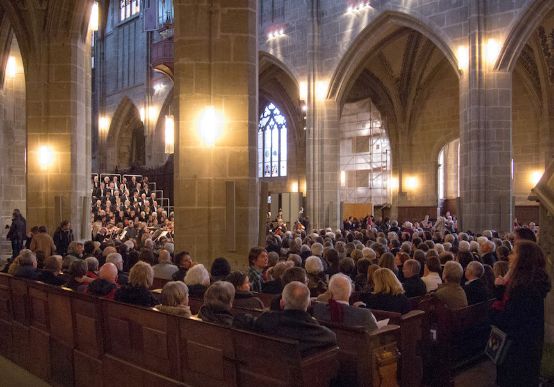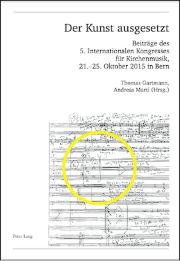Exposed to art
The 5th International Church Music Congress took place from October 21-25, 2015 in Bern. The contributions are now documented in an anthology.

"You don't have the right to expose us to art without protection," an audience member once complained at a concert of modern organ music, unaware that she had provided the title for an international congress dedicated to such contemporary church music. The Swiss Music Newspaper reported on it in issue 12/2015, p. 31. From Thomas Hürlimann's keynote speech to a discussion about Lukas Langlotz's premiere of a cantata at the closing service, this volume now documents all the contributions to the congress - papers, workshops, research colloquia, services - that will inspire theologians, historians, liturgists and church musicians to reflect and perhaps also experiment. What a book naturally cannot reproduce are the compositions commissioned especially for this congress.
Church music is a broad field, probably broader than worship music, but perhaps not quite identical with sacred music. Kurt Marti's question, "Is sound the meaning?", therefore served as the second theme of the congress. As obvious as it may be to answer in the affirmative, the relationship between sound and speech, between music and proclamation, especially in church services, is not so obvious. A number of contributions are dedicated to this. According to one interpretation, it is precisely the unfamiliar, often resistant nature of advanced church music that could be the element that makes the actualization of the Gospel, or perhaps even a reference to transcendence, visible. It would thus oppose the feel-good aesthetics of many of today's church services, which in turn expose church musicians to popular and trivial culture that is difficult to enjoy. For the church has lost its theological and aesthetic authority of interpretation and standardization, and its members, who have become ignorant of the tradition of psalms and hymns, feed themselves with the most diverse musical styles around the globe. Today's church music is thus caught between two poles: that of advanced sacred music, which, like contemporary secular music, appeals to a rather limited audience, and that of often displaced religious popular music, which is hardly aesthetically or liturgically satisfactory. How the churches cope with this tension and whether church music does not simply disintegrate into different milieus remains an open question. Fortunately, thanks to dedicated organists and choirmasters, there are concerts in many churches that perform unknown sacred works that reach far beyond the late Romantic period into the 20th century.
It remains to be said that a visually interested reader would have liked to be exposed to a somewhat more appealing book design.
Exposed to art. Contributions to the 5th International Congress on Church Music, October 21-25, 2015 in Bern, ed. by Thomas Gartmann and Andreas Marti, 339 p., Fr. 40.00, Peter Lang, Bern et al. 2017, ISBN 978-3-034325-63-9








